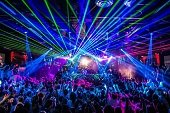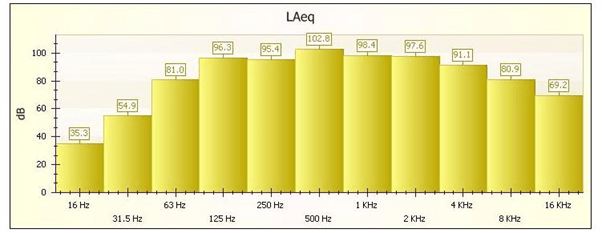What dB level can you be exposed to in a Nightclub and how dangerous is it for your hearing?
What dB level can you be exposed to in a Nightclub and how dangerous is it for your hearing? |
 | This month the Instrument Choice team headed into town to determine whether the noise
levels in nightclubs can be classified as dangerous. Using a surreptitiously hidden sound level
meter/dosimeter we took measurements to determine whether hearing damage was likely from one night
in a night club. | |||||||||||
| Equipment 1 x CEL-620B1-K1 1 x Handbag Method The CEL-620B was checked for calibration using the calibrator supplied in the kit. The sound level meter was then hid in the handbag and the microphone was left protruding. Once in the nightclub the “start” button was pushed which starts a recording run which stores all of the required data. The sound level meter was left to record sound levels for approximately 15 minutes before we stopped recording and left the nightclub. The results were then downloaded and reports were run using the insight software.
The information we were most interested in was the LAeq (which is the average sound level), the
LAFmax (highest reading under A weighting in Fast mode), LCPeak (absolute highest sound pressure
with time weighting) and the projected 8 hour dose (what we’d be exposed to if we stated there
for 8 hours). We also ran octave analysis to see which frequency bands had the highest
levels. Results
 Figure 1. Octave analysis of sound readings. DiscussionThe results from our 15 minute test show that the average sound level we were exposed to in the night club was 106dB, and the projected dose for 8hours exposure was 106dB. This is well above the exposure standard for noise of 85dB, which is set at that level because above it an unacceptable risk of hearing loss occurs. At these levels, without hearing protection, the daily noise exposure limit would be reached in approximately 3 minutes and 50 seconds. So, at these levels, within 4 minutes you would be damaging your hearing. The LCpeak reading attained during the test was 130.8dB. The National Standard for Occupational noise requires that the loudest LCpeak you can be exposed to is 140dB. This means that the readings we took were not above the recommended limit for peak sound pressure level, however it was still very high. Octave analysis of the noise data shows that the loudest sounds were between the 125Hz to 4Khz range, and it peaks around the 500Hz range. It’s in this frequency range that you would find electric guitars, piano, vocals, and some drums and bass, which probably explains why the sound level peaks in this frequency range. In conclusion, if you’re heading out for a night on the town, take some hearing protection or consider sticking to a quieter pub or bar. If you would like to discuss this experiment further please contact one of our friendly Scientists
via
email or phone on 1300 737 871.
| ||||||||||||
See our other newsletter articles here!
Contact our expert scientists now to get the right meter or data logger to suit your needs and discuss your project.
Phone: 1300 737 871
Email: [email protected]
